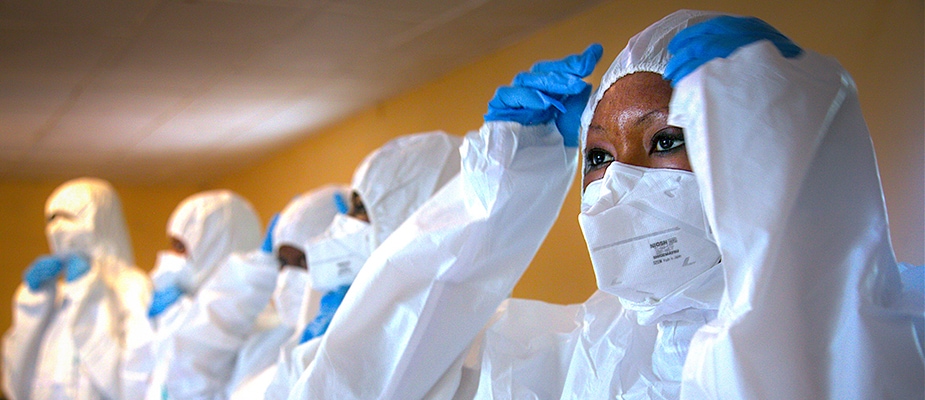Emergency Preparedness & Response
Addressing public health emergencies and saving lives through quick and effective action

In an age when a pathogen can travel from a remote village to major cities on all continents in 36 hours, countries have a greater-than-ever need to be prepared to respond to public health threats. A country’s ability to respond minimizes the potential for a local outbreak to become a global pandemic. Strong emergency response systems detect and contain outbreaks quickly at their source, preventing further spread. The Division of Global Health Protection (DGHP) strengthens emergency preparedness and response capacity by:
ENHANCING SURVEILLANCE SYSTEMS
Early warning of a public health threat is key in assessing potential risk to the global community and taking appropriate action
STRENGTHENING LABORATORY SYSTEMS
Appropriate diagnostics allow for fast and accurate confirmation of an outbreak’s cause, leading to a smarter response
TRAINING EMERGENCY RESPONDERS
Well-trained, highly skilled teams are crucial to efficiently and effectively managing responses in a timely manner
SUPPORTING EMERGENCY OPERATIONS CENTERS
Seasoned experts and established operating procedures enable countries to launch a coordinated, rapid response to a crisis

The Rohingya Refugee Camp
In an emergency, we understand that every minute counts.
From involving communities in reporting illness, to finding better ways to get laboratory samples safely delivered and accurately tested, to more efficient management of resources and people, we leverage our long-standing partnerships to help reduce response times from weeks to days – or even hours.
We coordinate a team of over 400 CDC experts ready to deploy in response to a public health emergency anywhere in the world within 72 hours of a declared emergency.
On a daily basis, we work to improve the international community’s ability to rapidly and effectively respond to public health threats, ensuring broader health security.
By The Numbers

94%
Global Health Security Agenda-supported countries established or strengthened their national emergency operations center1

1,770
Outbreaks reported by Global Disease Detection Centers since 2007

1782
Mobilizations of headquarters-based CDC experts for global health emergencies since 2015

6,050+
Outbreaks investigated by DGHP-trained disease detectives since 2005
The Division of Global Health (DGHP) supports CDC’s broader efforts to strengthen other countries’ public health emergency management capacity. DGHP collaborates with partners and other CDC experts to provide high-impact technical assistance to support sustainable public health systems.
DGHP strengthens emergency response systems through a variety of programs, including:
Active Programs
- Field Epidemiology Training Program
- Global Disease Detection Operations Center
- Global Health Security Agenda
- Global Noncommunicable Disease Program
- Global Rapid Response Team
- Improving Public Health Management for Action Program
- National Public Health Institutes Program
Recently Retired Program
Read our stories about emergency preparedness and response.
Learn through our emergency preparedness and response infographics:
With the next major disease outbreak on the horizon, DGHP remains committed to helping countries prepare for and mount an effective response. Fragile health systems anywhere leave openings for disease to take root and spread, allowing local challenges to become global crises. In the face of this threat, DGHP continues to leverage its resources and relationships, providing technical support for emergency preparedness and response to its partner countries around the world.
1. Data represent the 17 Global Health Security Agenda (GHSA) Phase-1 Priority Countries in fiscal year 2020.